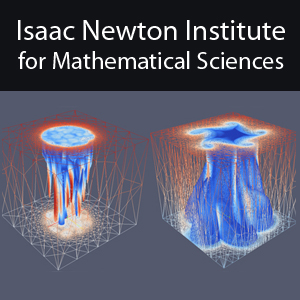A stable treatment of conservative thermodynamic variables for semi-implicit semi-Lagrangian dynamical cores
24 mins 10 secs,
243.06 MB,
WebM
640x360,
29.97 fps,
44100 Hz,
1.34 Mbits/sec
Share this media item:
Embed this media item:
Embed this media item:
About this item

| Description: |
Kevin Viner, (Naval Research Laboratory)
Wednesday 26 September 2012, 12:00-12:25 |
|---|
| Created: | 2012-09-27 12:59 |
|---|---|
| Collection: | Multiscale Numerics for the Atmosphere and Ocean |
| Publisher: | Isaac Newton Institute |
| Copyright: | Kevin Viner |
| Language: | eng (English) |
| Distribution: |
World
|
| Explicit content: | No |
| Aspect Ratio: | 16:9 |
| Screencast: | No |
| Bumper: | UCS Default |
| Trailer: | UCS Default |
| Abstract: | Atmospheric motions span a wide array of frequencies, the slowest of which provide us with our day to day weather. In numerical weather prediction it is necessary to narrow the focus to these lower frequencies for efficiency. The way this is typically done in global modeling is to apply an implicit time-differencing method to terms linked to high frequency motions while applying an explicit method to terms linked to low frequency motions like advection, thereby allowing a larger stable time step. While semi-Lagrangian schemes further increase efficiency by removing the stability restrictions of the standard CFL condition concerning velocity, they are still held to a slightly different deformation CFL condition concerning the local variation in velocity. As such, it is still necessary to slow these fast wave modes in the semi-Lagrangian framework to maintain a stable system.
Semi-Lagrangian systems employing a conservative thermodynamic variable such as potential temperature as a prognostic variable face a unique dilemma in applying this standard method because the term responsible for gravity wave generation is also a vertical advection term which is absorbed into the total derivative. Application of the scheme in the absence of an explicit gravity wave term results in an unstable system since the fast gravity mode frequencies are not properly reduced. Stability can be maintained at the expense of both accuracy and efficiency by way of artificial damping and reduced time steps. The modification discussed here defines a basic state potential temperature field which is advected in an Eulerian fashion while the semi-Lagrangian method is applied to the perturbation potential temperature. As the gravity-wave term in question is now expressed explicitly through the total derivative of the basic state potential temperature, gravity mode stability is returned to the system; the semi-implicit treatment of the new term manages stability with respect to the associated CFL condition. Tests of the new scheme in the Navy Global Environmental Model (NAVGEM) show that the method allows stable integration at typical semi-Lagrangian time steps in the absence of artificial damping. |
|---|---|
Available Formats
| Format | Quality | Bitrate | Size | |||
|---|---|---|---|---|---|---|
| MPEG-4 Video | 640x360 | 1.84 Mbits/sec | 335.00 MB | View | Download | |
| WebM * | 640x360 | 1.34 Mbits/sec | 243.06 MB | View | Download | |
| Flash Video | 484x272 | 568.61 kbits/sec | 100.58 MB | View | Download | |
| iPod Video | 480x270 | 505.89 kbits/sec | 89.54 MB | View | Download | |
| MP3 | 44100 Hz | 125.02 kbits/sec | 21.99 MB | Listen | Download | |
| Auto | (Allows browser to choose a format it supports) | |||||

